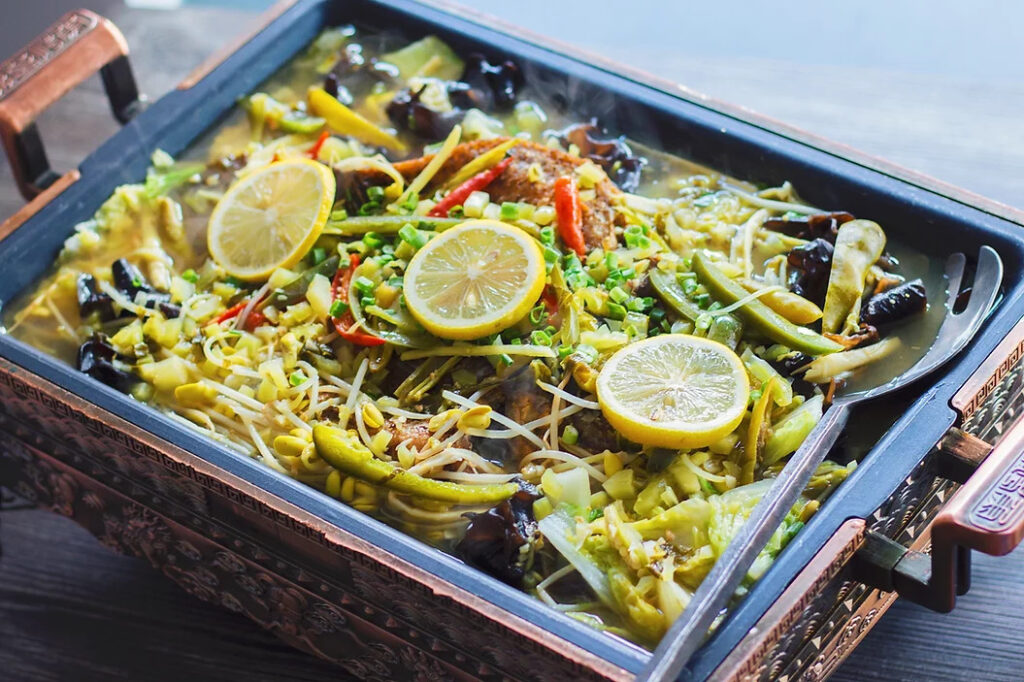Authentic Chinese Food: A Journey Through Traditional Flavors
Chinese cuisine is one of the most diverse and flavorful in the world. With a rich culinary history spanning over 5,000 years, it offers a variety of dishes that differ by region, preparation methods, and ingredients. But what defines authentic Chinese food? It’s all about the balance of flavors, respect for tradition, and the use of fresh, high-quality ingredients. In this guide, we’ll explore the essence of authentic authentic chinese food and introduce some of the most beloved dishes that are easy to make at home.
What Makes Chinese Food Authentic?
1. Regional Diversity:
China is a vast country, and its cuisine varies from region to region. Each area has its own unique flavors, cooking methods, and ingredients:
- Cantonese (Guangdong) Cuisine: Known for its light, fresh flavors and dim sum dishes.
- Sichuan Cuisine: Famous for its bold, spicy, and numbing dishes using the iconic Sichuan peppercorn.
- Shandong Cuisine: Characterized by seafood, saltiness, and fresh ingredients.
- Hunan Cuisine: Hot and sour dishes, often stir-fried or steamed.
- Fujian Cuisine: Incorporates seafood and soups, offering delicate and sweet flavors.
2. Balance of Flavors:
Authentic Chinese food is about balancing the five fundamental flavors: sweet, sour, salty, bitter, and umami. Each dish strives to achieve harmony, ensuring that no single flavor overpowers the others.
3. Fresh Ingredients:
Authentic Chinese chefs place great importance on using fresh, seasonal ingredients. Vegetables, meats, and seafood are often chosen based on their availability to ensure dishes are at their best.
Must-Try Authentic Chinese Dishes
1. Peking Duck
Originating from Beijing, this dish is known for its crispy skin and tender meat. The duck is roasted and served with thin pancakes, hoisin sauce, and sliced scallions. It’s a symbol of Chinese culinary sophistication and is often reserved for special occasions.
How to Make It at Home:
Although traditionally a labor-intensive dish, you can simplify it by using store-bought duck breast, roasting it, and pairing it with hoisin sauce, cucumber, and pancakes for a quicker, easier version.
2. Mapo Tofu
A spicy and flavorful dish from Sichuan, Mapo Tofu combines soft tofu with ground pork, Sichuan peppercorns, fermented bean paste, and chili oil. It has a signature “numbing” sensation due to the peppercorns, making it a favorite for those who love spicy food.
Home Cooking Tip:
You can adjust the spice level by controlling the amount of chili oil or peppercorns, making it more family-friendly.
3. Xiao Long Bao
These delicate soup dumplings are a staple in Shanghai cuisine. Filled with seasoned pork and a burst of savory broth, they are steamed to perfection and served hot.
Making It at Home:
Though challenging, you can use store-bought dumpling wrappers and create a simple filling. Steam them in a bamboo basket for an authentic touch.
4. Kung Pao Chicken
A classic dish from Sichuan, Kung Pao Chicken features diced chicken stir-fried with peanuts, vegetables, and chili peppers. The sweet, sour, and spicy flavors blend harmoniously in this easy-to-make dish.
Quick Recipe Tip:
To save time, marinate the chicken beforehand and stir-fry it with ready-made Kung Pao sauce. Pair it with jasmine rice for a complete meal.
5. Hot Pot
Hot Pot is less of a dish and more of a communal dining experience. Diners cook raw ingredients like meat, vegetables, and tofu in a simmering pot of broth at the table. It’s highly customizable, allowing you to choose your preferred broth and ingredients.
At-Home Version:
Invest in a portable burner and a divided pot. Choose from spicy Sichuan broth or mild chicken broth and invite friends and family to cook their own meal.
Key Ingredients in Authentic Chinese Food
1. Soy Sauce:
A fundamental ingredient in many Chinese dishes, soy sauce adds umami and depth to stir-fries, marinades, and dipping sauces. There are light and dark varieties, each with different uses in Chinese cuisine.
2. Rice Vinegar:
Used in many dishes, rice vinegar provides a delicate acidity to balance out flavors. It’s commonly used in dressings, sauces, and even for pickling vegetables.
3. Chinese Five-Spice Powder:
A blend of star anise, cloves, Chinese cinnamon, Sichuan peppercorns, and fennel seeds. This seasoning is often used in meat dishes and stir-fries, providing a warm, aromatic flavor.
4. Ginger and Garlic:
Fresh ginger and garlic are frequently used in Chinese cooking to enhance the aroma and taste of dishes. These two ingredients are often the base for stir-fries and marinades.
5. Sesame Oil:
This fragrant oil is used sparingly as a finishing touch in dishes. It adds a rich, nutty flavor, especially in cold dishes or salads.
How to Experience Authentic Chinese Food
1. Visit a Local Chinese Market:
Explore your local Asian market to find authentic ingredients that may not be available at regular grocery stores. Fresh produce, spices, and specialty sauces can elevate your home-cooked dishes.
2. Try Regional Specialties at Restaurants:
When dining out, look for restaurants that specialize in a particular regional cuisine. For example, seek out a Sichuan restaurant for spicy dishes or a Cantonese restaurant for dim sum.
3. Cook at Home:
Don’t be intimidated by cooking Chinese food at home. Start with simple recipes like fried rice or stir-fried vegetables. As you gain confidence, experiment with more complex dishes like dumplings or noodle soups.
Conclusion
Authentic Chinese food is a celebration of flavor, balance, and tradition. Whether you’re enjoying a bowl of Mapo Tofu or savoring the delicate layers of Xiao Long Bao, every bite tells a story of China’s rich culinary heritage. By understanding the importance of fresh ingredients, regional diversity, and flavor balance, you can create and enjoy authentic Chinese food at home.



